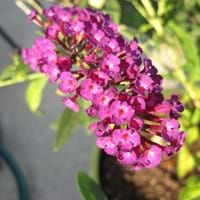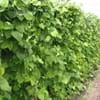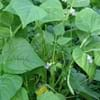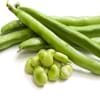Life Span
Biennial and Perennial
Perennial
Type
Vegetable
Flowering Plants, Shrubs
Origin
Europe, Western Asia
Africa, America, Asia
Types
Not Available
Lockinch, Petite Indigo, White Profusion
Number of Varieties
Not Available
Habitat
waste ground, wastelands
Along Railroads, River side, Roadsides
USDA Hardiness Zone
4-9
5-10
Sunset Zone
A1, A2, A3, H1, H2, 1a, 1b, 2a, 2b, 3a, 3b, 4, 5, 6, 7, 8, 9, 10, 11, 12, 13, 14, 15, 16, 17, 18, 19, 20, 21, 22, 23, 24
H1, 2a, 2b, 3a, 3b, 4, 5, 6, 7, 8, 9, 10, 11, 12, 13, 14, 15, 16, 17, 18, 19, 20, 21, 22, 23, 24
Habit
Rosette/Stemless
Arching/Fountain-shaped
Flower Color
Yellow
Blue, Pink, Purple, Red, White
Flower Color Modifier
Bicolor
Not Available
Fruit Color
Brown, Black
Not Available
Leaf Color in Spring
Green
Gray Green
Leaf Color in Summer
Green
Gray Green, Light Green
Leaf Color in Fall
Green
Gray Green, Light Green, Yellow green
Leaf Color in Winter
Not Available
Not Available
Leaf Shape
Pinnate
Egg-shaped
Plant Season
Summer
Fall, Spring, Summer, Winter
Sunlight
Full Sun
Full Sun, Part sun, Partial shade
Type of Soil
Loam
Loamy, Sandy, Well drained
The pH of Soil
Neutral
Neutral, Slightly Acidic, Slightly Alkaline
Soil Drainage
Well drained
Well drained
Tolerances
Drought
Drought, Pollution, Salt, Soil Compaction
Where to Plant?
Ground, Pot
Ground, Pot
How to Plant?
Seedlings
Seedlings, Stem Planting, Transplanting
Plant Maintenance
Medium
Medium
Watering Requirements
Average Water Needs, Do Not over Water, Keep the ground moist but not water-logged
Form a Soil ring to water efficiently, Water Deeply, Water twice a day in the initial period
In Summer
Lots of watering
Lots of watering
In Spring
Moderate
Moderate
In Winter
Average Water
Average Water
Soil pH
Neutral
Neutral, Slightly Acidic, Slightly Alkaline
Soil Type
Loam
Loamy, Sandy, Well drained
Soil Drainage Capacity
Well drained
Well drained
Sun Exposure
Full Sun
Full Sun, Part sun, Partial shade
Pruning
Remove damaged leaves, Remove dead branches, Remove dead leaves
Cut or pinch the stems, Prune for shortening long shoots, Prune if you want to improve plant shape, Prune ocassionally, Remove damaged leaves, Remove dead or diseased plant parts, Remove deadheads, Remove shoots
Fertilizers
All-Purpose Liquid Fertilizer
All-Purpose Liquid Fertilizer
Pests and Diseases
Aphids, Armyworm, Cutworms, Downy mildew, Pitch canker, Red blotch
Downy mildew, Leaf spot, Spider mites
Plant Tolerance
Drought
Drought
Flower Petal Number
Not Available
Single
Fragrant Bark/Stem
Yes
No
Foliage Texture
Fine
Medium
Foliage Sheen
Matte
Matte
Attracts
Butterflies
Butterflies, Hummingbirds
Allergy
Stomach burn
Vomiting
Aesthetic Uses
Not Available
Showy Purposes
Beauty Benefits
Blood purifying, Good for skin
Not Available
Environmental Uses
Air purification
Air purification
Medicinal Uses
Aphrodisiac
Not Available
Part of Plant Used
Root
Flowers, Leaves
Other Uses
Food for animals, Used as a nutritious food item
Showy Purposes, Used as Ornamental plant
Used As Indoor Plant
Yes
No
Used As Outdoor Plant
Yes
Yes
Garden Design
Edible, Herb, Vegetable
Edging, Feature Plant, Foundation
Botanical Name
PASTINACA sativa
Buddleia davidii
Common Name
Parsnip
Butterfly Bush, Summer Lilac, Butterflybush
In Hindi
चुकंदर
Butterfly Bush
In German
Pastinake
Schmetterlingsstrauch
In French
Panais
buisson de papillon
In Spanish
Chirivía
arbusto de las mariposas
In Greek
Είδος δαυκίου
Butterfly Μπους
In Portuguese
cherivia
arbusto de borboleta
In Polish
Pasternak
Butterfly Bush
In Latin
parsnip
papilio rubo
Phylum
Magnoliophyta
Spermatophyta
Class
Magnoliopsida
Dicotyledonae
Family
Apiaceae
Scrophulariaceae
Clade
Angiosperms, Asterids, Eudicots
Angiosperms, Asterids, Eudicots
Tribe
Not Available
Not Available
Subfamily
Not Available
Not Available
Number of Species
Not Available
Importance of Parsnip and Butterfly Bush
Want to have the most appropriate plant for your garden? You might want to know the importance of Parsnip and Butterfly Bush. Basically, these two plants vary in many aspects. Compare Parsnip and Butterfly Bush as they differ in many characteristics such as their life, care, benefits, facts, etc. Every gardener must at least have the slightest clue about the plants he wants to plant in his garden. Compare their benefits, which differ in many ways like facts and uses. The medicinal use of Parsnip is Aphrodisiac whereas of Butterfly Bush is Not Available. Parsnip has beauty benefits as follows: Blood purifying and Good for skin while Butterfly Bush has beauty benefits as follows: Blood purifying and Good for skin.
Compare Facts of Parsnip vs Butterfly Bush
How to choose the best garden plant for your garden depending upon its facts? Here garden plant comparison will help you to solve this query. Compare the facts of Parsnip vs Butterfly Bush and know which one to choose. As garden plants have benefits and other uses, allergy is also a major drawback of plants for some people. Allergic reactions of Parsnip are Stomach burn whereas of Butterfly Bush have Vomiting respectively. Having a fruit bearing plant in your garden can be a plus point of your garden. Parsnip has no showy fruits and Butterfly Bush has no showy fruits. Also Parsnip is not flowering and Butterfly Bush is flowering. You can compare Parsnip and Butterfly Bush facts and facts of other plants too.





